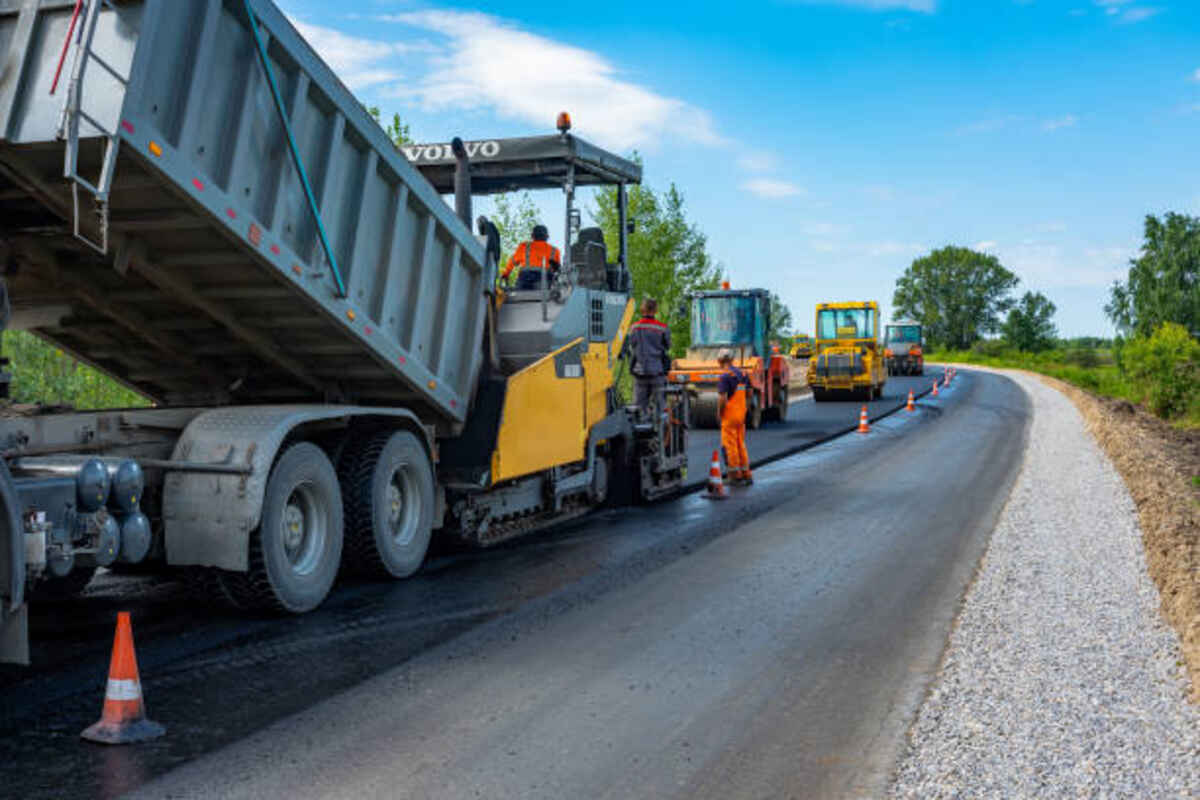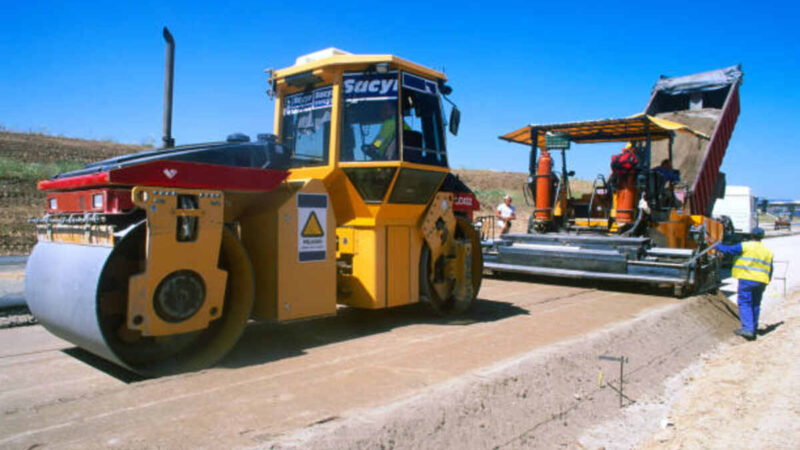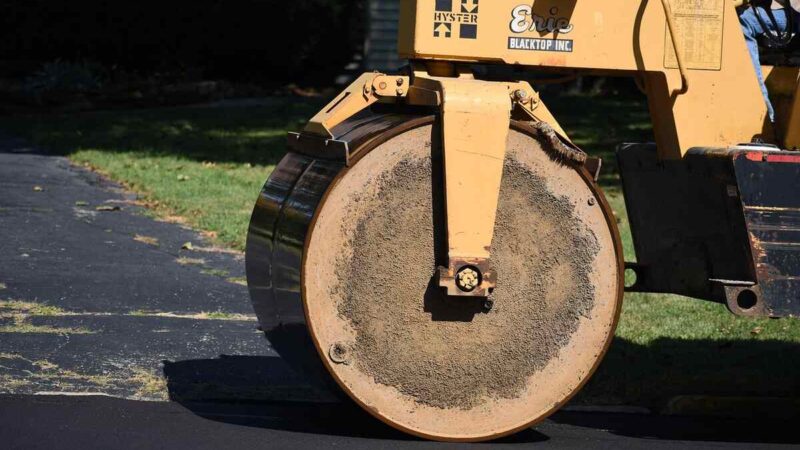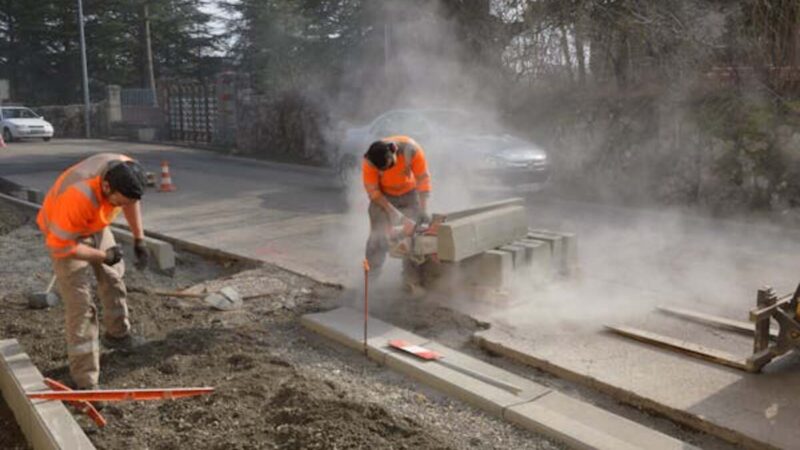Common Asphalt Paving Mistakes to Avoid

Introduction
Asphalt paving is a crucial part of modern infrastructure, affecting everything from roads and highways to parking lots and driveways. Whether you’re a contractor, property owner, or simply interested in learning more about construction best practices, understanding the pitfalls of asphalt paving is essential. In this article, we’ll dive into the world of asphalt paving mistakes—focusing specifically on common asphalt paving mistakes that many encounter. By getting a solid grip on these issues, you’ll be better equipped to avoid costly errors and ensure that your paving project stands the test of time. Typically the Interesting Info about Overland Park Asphalt Contractor.
In the first few paragraphs, you’ll notice that the term asphalt paving mistakes is emphasized to make sure readers immediately grasp the main concern of the piece. After all, these mistakes can lead to significant setbacks and extra expenses if not handled properly. We’re here to guide you through the nuances, offering both detailed explanations and actionable tips, all while maintaining an optimistic yet formal tone.
Paving isn’t just about laying down a surface—it involves careful planning, quality control, and continual maintenance. When projects go awry, the repercussions can ripple through budgets and timelines, sometimes even impacting safety. But don’t worry, we’re not here to dissuade you from asphalt paving altogether; instead, we’re focusing on how to sidestep common pitfalls. We’ll cover everything from the basics of what asphalt paving involves to an in-depth look at the top 10 mistakes that can occur during the process.
By the end of this article, you’ll have a clearer understanding of why proper planning is so important, and you’ll learn strategies that not only help you avoid these pitfalls but also optimize the longevity and performance of your paved surfaces. You might even discover some surprising details about the costs and maintenance challenges that come with these mistakes. We aim to empower you with expert knowledge, ensuring that you approach your next paving project with confidence and clarity.
Along the way, we’ll integrate natural language and even sprinkle in a few colloquial expressions to keep things relatable. After all, while the subject matter is technical, we believe that anyone—regardless of background—can benefit from this guide if explained in clear, straightforward language. The content is designed with a grade 7 reading level in mind, so we’ll avoid overly complex jargon, ensuring that the information is accessible to a wide audience.
We’ll also touch upon the principles of E-E-A-T (Experience, Expertise, Authoritativeness, and Trustworthiness) by referencing reliable sources and real-world examples. For instance, industry experts consistently point out that proper site preparation and quality control are key to a successful asphalt paving project. As we navigate through these topics, you’ll learn not just what to avoid but also how to implement preventive measures.
Whether you’re managing a large construction project or a smaller residential job, understanding these mistakes is crucial. The insights provided here are based on best practices and practical experience, so you can trust that the recommendations are both effective and realistic. So, let’s get started on this journey to better, error-free asphalt paving!
Understanding Asphalt Paving
Asphalt paving is more than just spreading a layer of black material on a surface; it’s a detailed process that involves planning, precise material handling, and careful execution. In this section, we’ll break down the fundamentals of asphalt paving so you can appreciate its complexity and the role that quality plays in the outcome.
What is Asphalt Paving?
At its core, asphalt paving is the process of laying a durable, flexible surface primarily used for roads and other high-traffic areas. The process starts with thorough site preparation—ensuring that the ground is stable and properly graded. Then, layers of materials are applied, with each layer compacted to form a resilient, weather-resistant surface. This method is used globally because of its cost-effectiveness and reliability.
You might be wondering, “Why is asphalt chosen so frequently?” Well, asphalt’s flexibility makes it ideal for withstanding the wear and tear of heavy traffic and extreme weather conditions. When done right, it offers a smooth, durable finish that can be maintained with routine care. However, if any step in the process is rushed or overlooked, it can lead to a host of issues down the line, which is why understanding each phase is critical.
Benefits of Asphalt Paving
There are several compelling reasons why asphalt is the go-to choice for paving projects. For one, it’s highly durable and can flex with temperature changes, minimizing the risk of cracking. Asphalt paving also boasts a relatively quick installation time, meaning that roads and driveways can be put into service sooner rather than later. Furthermore, maintenance is typically straightforward and cost-effective. Routine maintenance like seal coating can extend the life of the pavement considerably, saving money in the long run.
In addition, the environmental footprint of asphalt paving is often lower than that of other materials, thanks to recycling processes that allow old asphalt to be reused in new projects. This sustainability factor is a big plus in today’s eco-conscious world. When managed properly, asphalt paving can be both economically and environmentally sound.
It’s also worth noting that many experts in the industry underscore the importance of quality control and proper material selection. These benefits, however, can quickly turn into major pitfalls if certain errors are made during the paving process. That’s why having a solid understanding of both the benefits and the challenges of asphalt paving is essential. For a deeper dive into industry standards and guidelines, you might check out Asphalt Paving Association for additional resources.
Throughout this section, we’ve aimed to provide a balanced view of asphalt paving—highlighting not only its strengths but also hinting at potential weaknesses when proper procedures aren’t followed. By blending technical details with accessible language, our goal is to help you build a comprehensive understanding of the subject. This foundation will prove invaluable as we transition into discussing the common mistakes that can undermine an otherwise solid paving project.
As you can see, the success of an asphalt paving project depends on meticulous attention to detail from start to finish. With every step playing a critical role, even minor oversights can snowball into significant problems. Our next section will zero in on these very issues, offering you insights into how to recognize and avoid common asphalt paving mistakes.
Top 10 Common Mistakes in Asphalt Paving
When it comes to asphalt paving, a few missteps can turn an otherwise promising project into a long-term headache. In this section, we explore the top 10 common mistakes in asphalt paving, discussing why they occur and how they can be prevented. Each mistake has its own set of consequences, so understanding them is key to achieving a quality finish.
1. Inadequate Site Preparation
The foundation of any solid pavement is thorough site preparation. Skimping on this step can lead to uneven surfaces, poor drainage, and premature cracking. Without a stable base, even the best asphalt mix won’t perform well over time. Contractors need to ensure that soil conditions are properly assessed and that any necessary grading or compaction is completed before laying the asphalt.
2. Poor Material Quality
Using substandard materials is one of the most common reasons for asphalt paving failures. Quality issues can arise from the use of recycled materials that haven’t been properly processed or aggregates that don’t meet industry standards. These issues not only affect the durability of the pavement but also its overall appearance and safety.
3. Incorrect Asphalt Mix
Getting the mix right is crucial. An incorrect asphalt mix—whether too rich in a binder or lacking sufficient aggregate—can lead to a surface that’s too soft or too brittle. Striking the perfect balance ensures that the pavement is both flexible and resilient. Quality control during the mix production is essential to avoid this mistake.
4. Insufficient Compaction
Even with the right materials, insufficient compaction can doom a project from the start. Proper compaction removes air pockets and ensures that the asphalt bonds well to the underlying layers. Failing to achieve the recommended compaction can lead to rapid deterioration and costly repairs.
5. Improper Drainage
Water is one of asphalt’s worst enemies. If drainage isn’t properly addressed during the design and construction phases, water can seep into the pavement, leading to soft spots, potholes, and eventually, structural failure. Effective drainage systems are as important as the paving itself.
6. Inadequate Thickness
Pavement thickness plays a pivotal role in durability. Applying too thin a layer may not provide the necessary support for heavy loads, while an excessively thick layer can result in unnecessary costs and issues with curing. Contractors must adhere to design specifications to ensure optimal thickness.
7. Inappropriate Timing
The weather and timing of the paving process are critical. Paving during extreme temperatures or in the wrong season can hinder proper setting and curing. Timing is especially important for ensuring that the asphalt bonds correctly to the base layer.
8. Lack of Maintenance
Even the best asphalt pavements require routine maintenance. Neglecting regular inspections and repairs can allow minor issues to evolve into major problems. Maintenance tasks, like seal coating and crack filling, are essential to extending the lifespan of the pavement.
9. Ignoring Weather Conditions
Weather plays a huge role in the success of asphalt paving. Ignoring forecasts or failing to adjust the work schedule to accommodate adverse conditions can lead to subpar results. It’s crucial to plan projects with weather conditions in mind to avoid unexpected complications.
10. Skipping Quality Control
Finally, skipping or minimizing quality control measures is a common yet costly mistake. Without rigorous testing and inspection at various stages of the paving process, defects can easily go unnoticed. Implementing a robust quality control protocol is vital for ensuring that the finished pavement meets all required standards.
Each of these mistakes, if overlooked, can lead to a compromised pavement that may require expensive repairs or even complete replacement down the road. By understanding the root causes and potential impacts of these errors, contractors and property owners alike can take proactive steps to safeguard their investments. Remember, avoiding these asphalt paving mistakes isn’t just about saving money—it’s also about ensuring safety and longevity for any paved surface.
Cost Implications of Asphalt Paving Errors
The financial repercussions of asphalt paving errors can be significant. When mistakes occur, they often lead to unexpected repair costs, increased maintenance expenses, and even safety hazards that can further escalate the overall project cost. In this section, we’ll discuss the various cost implications associated with common paving mistakes and why investing in quality control and preventive measures is essential.
Errors in the paving process can result in issues like premature cracking, potholes, and surface irregularities, which in turn may require frequent and costly maintenance. For instance, inadequate site preparation or poor material quality can shorten the lifespan of the pavement, leading to repairs that add up over time. Not only does this impact budgets, but it can also disrupt traffic and commercial activities, further increasing indirect costs.
Moreover, projects that are not executed with proper quality standards may necessitate a complete overhaul much sooner than anticipated. This means that a one-time cost saving achieved by cutting corners is likely to be offset by long-term expenses. In many cases, the lack of a robust quality control process is the underlying cause of these escalating costs. With thorough inspections and adherence to industry best practices, many of these expenses can be avoided.
It’s also important to consider the indirect financial impacts. For instance, if a paved surface is used for a business or public infrastructure, frequent repairs and poor aesthetics can deter customers and negatively affect the local economy. In essence, every dollar invested in quality materials, proper installation, and regular maintenance can save significantly more down the road.
Furthermore, insurance premiums may rise if a project is known to have recurring issues. Safety hazards such as uneven surfaces or inadequate drainage not only compromise functionality but also pose risks to pedestrians and vehicles. When accidents occur, the associated legal and medical costs can be staggering. Hence, the upfront cost of hiring experienced professionals and using high-grade materials is a wise investment in preventing these expensive pitfalls.
The financial case for avoiding asphalt paving mistakes is compelling. When you invest in proper planning, quality materials, and meticulous execution, you’re essentially reducing the risk of future expenditures. This proactive approach aligns with best practices recommended by industry experts and is supported by numerous case studies that show a clear correlation between quality control and cost savings.
In today’s competitive market, ensuring the longevity of your pavement isn’t just about aesthetics—it’s about smart financial management. When you factor in the cost of potential downtime, emergency repairs, and even legal liabilities stemming from accidents, the benefits of getting it right the first time become even more apparent. Thus, whether you’re managing a public works project or a private development, it pays to understand and mitigate the cost implications of common errors.
Preventive Strategies for Successful Paving
Prevention is always better than cure, especially in the context of asphalt paving. This section outlines a range of strategies that can help you avoid common mistakes and ensure that your paving project is a success from start to finish. By following these preventive measures, you can achieve a durable, high-quality pavement that stands up to both time and heavy usage.
One of the first steps is ensuring meticulous site preparation. This means assessing the soil conditions, grading the land appropriately, and establishing a stable base. A well-prepared site minimizes the risk of uneven surfaces and drainage issues. Additionally, selecting high-quality materials is non-negotiable. Always opt for aggregates and binders that meet industry standards, as this significantly impacts the longevity of the pavement.
Equally important is the need for a balanced asphalt mix. Maintaining the right proportions of binder and aggregates is crucial, and this is where modern testing methods come into play. Utilizing state-of-the-art equipment to analyze the mix can help you achieve optimal consistency, reducing the risk of the pavement being too brittle or too soft. Consistent testing throughout the project also ensures that any deviations are caught early.
Proper compaction cannot be stressed enough. Whether you’re dealing with a residential driveway or a major highway, thorough compaction ensures that there are no air pockets in the asphalt layer. This step is vital for enhancing durability and preventing premature wear and tear. Investing in advanced compaction machinery and monitoring the process closely are steps that pay dividends in the long run.
Another preventive strategy is to always keep weather conditions in mind. Paving should ideally be done during periods of moderate weather—extreme temperatures or moisture can adversely affect the curing process. Planning your schedule around weather forecasts and adjusting project timelines when necessary can help avoid complications that arise from unfavorable conditions.
Routine maintenance is also part of a robust preventive strategy. Even with a perfect installation, regular inspections and timely repairs are key to extending the lifespan of your pavement. Simple measures like seal coating and crack filling can help preserve the integrity of the surface, reducing the likelihood of major repairs later on.
In addition, implementing a comprehensive quality control protocol is essential. This involves not only initial testing but also continuous monitoring at every stage of the project. By setting strict quality benchmarks and having a clear checklist, you ensure that any potential issues are addressed immediately. It’s all about creating a culture of excellence where every detail is given due attention.
Collaboration with experienced professionals further enhances the chances of success. When you work with contractors who have a proven track record, you benefit from their expertise and can avoid many of the pitfalls that less experienced teams might encounter. Moreover, open communication between all stakeholders—from suppliers to on-site workers—ensures that everyone is aligned with the project goals.
Lastly, embracing modern technology and industry best practices can significantly improve the outcome of your project. Advanced machinery, digital monitoring tools, and ongoing training for workers all contribute to a smoother, more efficient paving process. Remember, the goal is to prevent errors before they happen rather than fix them after the fact. By adopting these strategies, you’re setting your project up for long-term success while avoiding the costly repercussions of common asphalt paving mistakes.
FAQs About Asphalt Paving Mistakes
What are the most common asphalt paving mistakes?
The most frequent mistakes include inadequate site preparation, poor material quality, incorrect asphalt mix, insufficient compaction, improper drainage, and skipping quality control. Each of these issues can significantly reduce the pavement’s lifespan.
How can I ensure quality in my asphalt paving project?
Prioritize proper site preparation, use high-grade materials, maintain the correct mix, and invest in advanced compaction and testing equipment. Regular maintenance and continuous quality control are also crucial for success.
Why is proper drainage important in asphalt paving?
Proper drainage prevents water accumulation, which can weaken the asphalt and lead to potholes, cracks, and overall structural failure. Good drainage design is key to a durable pavement.
Can weather conditions really affect asphalt paving?
Yes, weather conditions play a huge role. Extreme temperatures or moisture can interfere with the curing process, so it’s vital to plan paving activities during favorable weather to avoid complications.
What is the impact of poor material quality on asphalt paving?
Using substandard materials can lead to premature wear, reduced durability, and higher maintenance costs. Quality materials are essential for a long-lasting and resilient pavement
How often should I maintain my asphalt pavement?
Regular maintenance, such as seal coating and crack repairs, should be performed at least every few years depending on traffic volume and environmental conditions. This proactive approach helps prevent major issues down the road.
Conclusion
Avoiding common asphalt paving mistakes is crucial for ensuring a durable, cost-effective, and safe paved surface. By understanding the intricacies of asphalt paving—from site preparation and material selection to proper compaction and maintenance—you’re better equipped to prevent errors that could lead to significant financial losses and safety hazards. Following proven preventive strategies not only extends the lifespan of your pavement but also contributes to smoother, more efficient project execution.
Investing in quality control, embracing modern technology, and collaborating with experienced professionals are all key components of a successful paving project. Whether you’re a seasoned contractor or a first-time property owner, the insights shared in this article offer a roadmap to overcoming common challenges and achieving excellent results.
Remember, a little extra planning and attention to detail at the start can save you from costly repairs and disruptions later. With the right approach, you can ensure that your asphalt paving project stands strong for years to come.







